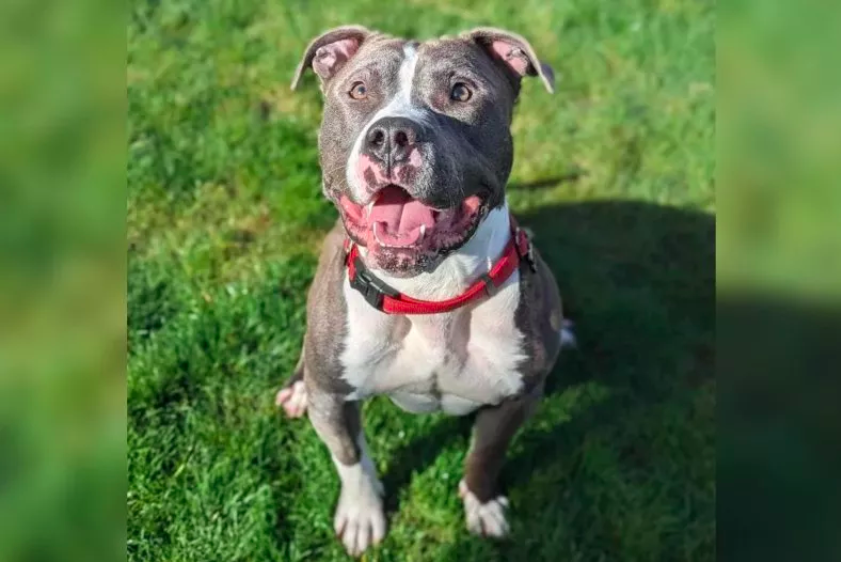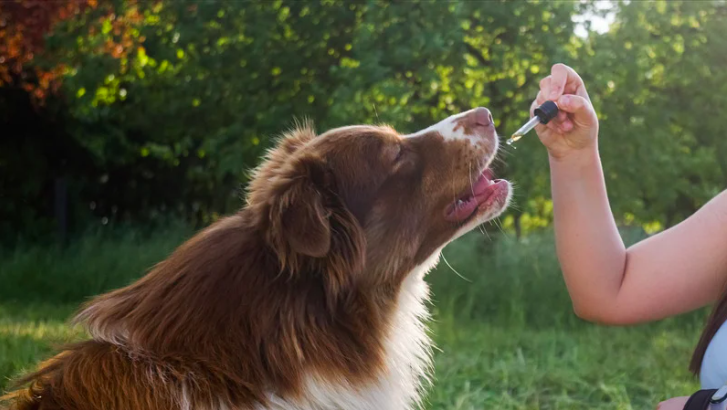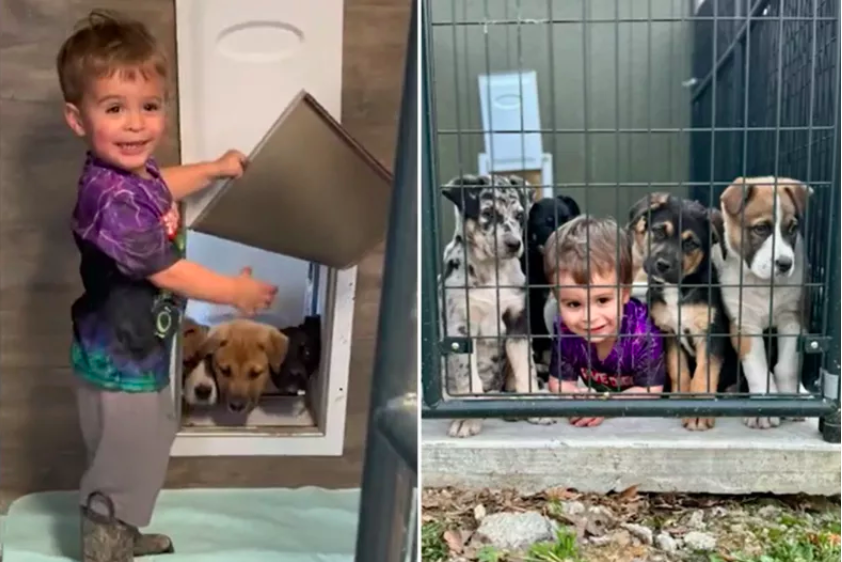Dogs
Brainy Woofers: Unveiling The Top 5 Most Intelligent Dog Breeds
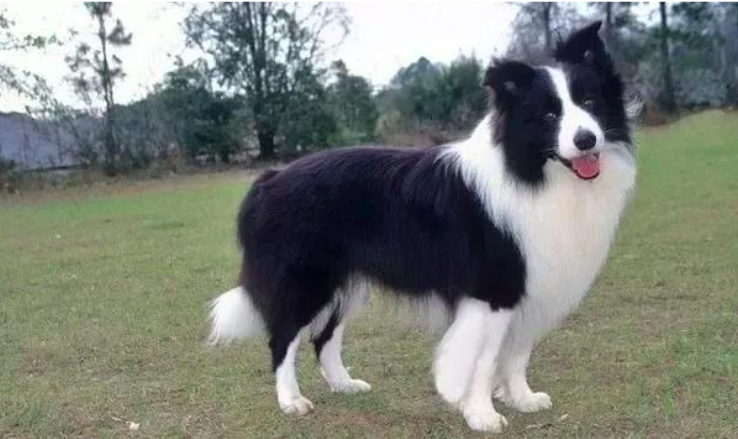
Brainy Woofers: Unveiling The Top 5 Most Intelligent Dog Breeds
When it comes to finding a furry companion, many people prefer dogs as pets. Dogs are known for their loyalty, affection, and intelligence. However, not all dog breeds are created equal in terms of intelligence.
Some dog breeds are more intelligent than others and can be trained to perform complex tasks quickly. In this article, we will explore the most intelligent dog breeds and why they are so smart.
What Makes A Dog Breed Intelligent?
Before we dive into the most intelligent dog breeds, it’s important to understand what makes a dog breed intelligent. Intelligence in dogs is usually measured by their ability to learn quickly, solve problems, and adapt to new situations.
These skills are crucial for dogs that need to perform tasks such as search and rescue, therapy, and guide dogs for people with disabilities.
The intelligence of a dog is influenced by several factors, including genetics, training, and socialization. Breeds with a strong work ethic, high energy levels, and an eagerness to please are usually more intelligent than breeds that are less motivated.
Genetics
Genetics plays a significant role in determining a dog’s intelligence level. Some dog breeds have been selectively bred for their intelligence, while others were bred for other traits such as hunting, herding, or guarding.
Breeds like the Border Collie, Poodle, and German Shepherd were specifically bred for their intelligence, which makes them more adept at problem-solving and learning new commands.
Training
Training is a crucial factor that can improve a dog’s cognitive abilities. The type of training that a dog receives can help develop their memory, problem-solving skills, and decision-making abilities.
Dogs that are well-trained tend to be more confident, adaptable, and responsive to their owner’s commands. Proper training can help improve the dog’s ability to learn quickly, retain information, and perform complex tasks.
Socialization
Socialization is another crucial factor that can influence a dog’s intelligence. Dogs that are socialized at an early age tend to be more confident, adaptable, and comfortable in new situations.
Socialization can help develop a dog’s cognitive abilities by exposing them to new experiences, people, and animals. Socialization can help a dog learn how to communicate with other dogs, read social cues, and make better decisions.
Environment
The environment that a dog lives in can also impact their cognitive abilities. Dogs that live in a stimulating environment with plenty of mental and physical activities tend to have better cognitive abilities than dogs that live in a dull and unstimulating environment.
An enriched environment can help improve a dog’s cognitive abilities by providing them with opportunities to explore, play, and learn. Activities such as obedience training, agility training, and puzzle toys can help keep a dog’s mind engaged and sharp.
Intelligence Tests
There are several intelligence tests available that can help determine a dog’s cognitive abilities. These tests can measure a dog’s problem-solving skills, memory, and ability to learn new commands.
Tests like the Canine Intelligence Test, which involves tasks such as opening a door, retrieving an object, and solving a puzzle, can help determine a dog’s intelligence level. In summary, a dog’s intelligence is influenced by several factors, including genetics, training, socialization, and the environment.
Genetics play a significant role in determining a dog’s intelligence level, but training, socialization, and a stimulating environment can help improve their cognitive abilities.
Intelligence tests can help determine a dog’s cognitive abilities and can be a useful tool for selecting a dog with the desired traits.
What Kind Of Dog Has The Highest Level Of Intelligence?
It is difficult to determine the level of intellect in any mammal. When it comes to determining intelligence in humans, intellectual ability is merely one of several important factors to consider.
Our emotional intelligence, which is described as “the ability to identify and regulate one’s own emotions and understand the feelings of others,” is what enables us to build and maintain relationships in both our personal and professional life, with respect to the Gallup Organization.
According to a study, measuring intelligence in our canine companions is just as difficult as determining intellect in humans.
Canine psychologist Stanley Coren considered the following factors when ranking dog breeds in terms of intelligence: Adaptive intelligence is a term used to describe the ability to adapt to changing circumstances.
- Kinesthetic intelligence
- Interpersonal intelligence
- Instinctive intelligence
- Adaptive intelligence
- Working intelligence
- Spatial intelligence
Coren’s book, The Intelligence of Dogs, has statistics on 199 different dog breeds that he collated. Which dog breed is the most intelligent? In the opinion of Coren, the border collie is the most intelligent canine breed on the planet.
Top 5 Most Intelligent Dog Breeds
Here are the top five most intelligent dog breeds based on their ability to learn and perform tasks quickly. According to Coren, in the spirit of Coren’s book, here are the five brightest dog breeds on the planet.
1. Border Collie
The Border Collie is one of the most intelligent dog breeds in the world. Bred to herd sheep in the Scottish borders, these dogs have excellent problem-solving skills, a high level of energy, and an eagerness to please.
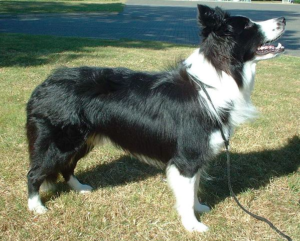
They are often used in search and rescue operations, agility competitions, and as service dogs. Isn’t it interesting that a border collie named Chaser was trained to recognize over 1,022 different nouns?
Coupled with their intelligence, border collies are recognized for their innate intelligence, which makes them particularly well-suited for such a task.
Border Collies, who were originally developed as herders, are widely regarded as the world’s most intelligent canine breed. Because of their adaptive intellect and desire to please, they are quite simple to train.
In fact, many Border Collies can learn new behavior in less than five repetitions, making obedience training a snap for these bright puppies.
2. Poodle
Poodles are highly intelligent dogs with excellent memory and an eagerness to learn. They are often used as service dogs, guide dogs for people with disabilities, and in hunting.
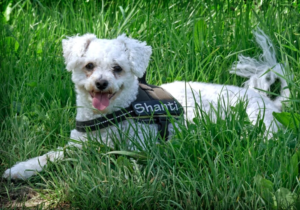
Poodles come in three different sizes, including toy, miniature, and standard, and all three sizes are equally intelligent. However, contrary to popular belief, poodles are not a prim and proper breed of dog by nature.
Poodles were initially used as retrievers in their native France, where they still are today. Even their well-known “show cut” may be traced back to their retrieval days as well.
It is not the ornamental Poodle’s mane; it is designed to shield their joints from the cold water, and it is the close-cropped sections that are shaved to prevent the Poodle’s fur from absorbing too much water and weighing them down. Hunting, tracking, and obedience training are all possible with this exceptionally intelligent breed.
3. German Shepherd
German Shepherds are known for their intelligence, loyalty, and courage. They are often used as police dogs, search and rescue dogs, and as guide dogs for people with disabilities.

German Shepherds are easy to train and are quick learners, making them an excellent choice for families who want an intelligent and loyal pet. German Shepherds are well-known for their work in police enforcement and as service dogs, and they are also excellent at obedience training.
This bright, protective breed can learn new orders with only a few repetitions, and their devotion to their family is practically unrivaled in the canine world. In a wide range of disciplines, their mix of intelligence and loyalty has made them highly sought-after companions to have.
In fact, German Shepherds were the first guide dogs when they were introduced in the 1920s, and the breed is still in service today.
4. Golden Retriever
Golden Retrievers are friendly, loyal, and highly intelligent dogs. They are often used as guide dogs for people with disabilities, therapy dogs, and in search and rescue operations.
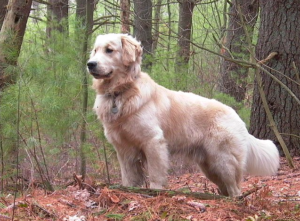
Golden Retrievers are easy to train and are excellent with children, making them a popular family pet. One of the most popular and intelligent dog breeds is also one of the most intelligent.
Golden Retrievers are usually regarded as the fourth brightest dog globally, and they are well-known for their obedience and enthusiasm to please their owners. What is it about golden retrievers that makes them so intelligent?
Adaptive intelligence, according to the experts, is what allows them to understand human emotions and adapt to diverse situations swiftly and efficiently.
5. Doberman Pinscher
Doberman Pinschers are highly intelligent dogs with a strong work ethic and an eagerness to please. They are often used as guard dogs, police dogs, and in search and rescue operations.
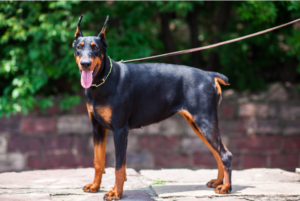
Doberman Pinschers are loyal and affectionate with their owners but can be reserved with strangers. In other cases, intelligence and obedience do not go hand in hand, as is the case in the case of Doberman Pinschers.
Dobermans are extremely intelligent dogs who can become bored during training sessions. They’ve even been known to outwit and outperform professional dog trainers in some instances.
Having said that, presenting your Doberman with intellectually challenging toys will make training a lot easier for you both. Doberman pinschers were formally bred as guard dogs, and they have since been employed in law enforcement and search and rescue operations.
Honorable Mentions
Other dog breeds that are known for their intelligence include:
- Labrador Retriever
- Australian Shepherd
- Shetland Sheepdog
- Belgian Malinois
- Rottweiler
Which Little Dog Breeds Are The Most Intelligent?
Small dogs are sometimes represented as unpleasant ankle-biters with yappy tails in the media. Because of this, small dogs might sometimes earn an unfair reputation. Moreover, this couldn’t be further from the reality. Small dogs can be as devoted, affectionate, and intellectual as their larger counterparts.
Small breeds make wonderful companions, whether you live in an apartment with breed size restrictions or you simply prefer a small dog that is easy to pick up and carry. Having said that, have you ever pondered which little dog breeds are the most intelligent Small dogs are becoming more and more popular as pets, and many people are wondering which little dog breeds are the most intelligent.
Despite their small size, some small dog breeds are incredibly intelligent and can perform complex tasks with ease. Here are some of the most intelligent little dog breeds:
1. Poodle
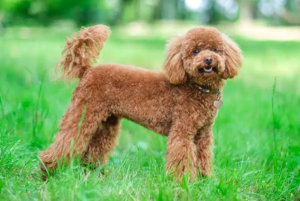
Poodles are one of the most intelligent small dog breeds. They are highly trainable and can excel in obedience competitions and agility trials. Poodles have excellent problem-solving skills and are known for their ability to learn quickly.
2. Shetland Sheepdog
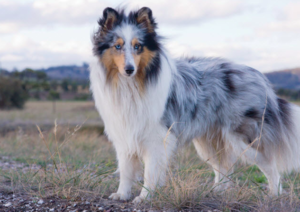
Shetland Sheepdogs, also known as Shelties, are another highly intelligent small dog breed. They were originally bred to herd sheep in Scotland and have excellent problem-solving skills. Shelties are highly trainable and excel in obedience competitions.
3. Papillon
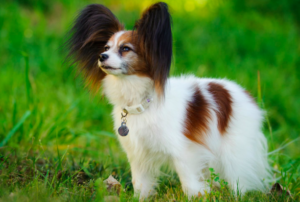
The Papillon is a small dog breed with a big personality. They are highly intelligent and excel in obedience competitions and agility trials. Papillons have a strong desire to please their owners and can learn new commands quickly.
4. Miniature Schnauzer
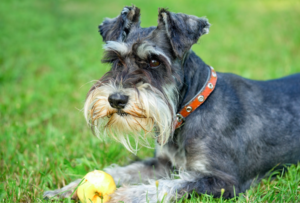
The Miniature Schnauzer is a small dog breed with a big personality. They are highly intelligent and can excel in obedience and agility competitions. Miniature Schnauzers have excellent problem-solving skills and are known for their ability to learn quickly.
5. Welsh Corgi
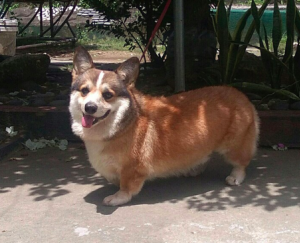
Welsh Corgis are small dog breeds that are known for their intelligence and herding abilities. They are highly trainable and can excel in obedience competitions. Welsh Corgis have excellent problem-solving skills and are quick learners.
In summary, the Poodle, Shetland Sheepdog, Papillon, Miniature Schnauzer, and Welsh Corgi are some of the most intelligent small dog breeds. These breeds have a natural intelligence that makes them highly trainable and adaptable to new situations.
However, it’s essential to remember that intelligence is not the only factor to consider when selecting a small dog breed, and other factors such as temperament, energy level, and grooming needs should also be taken into account.
Conclusion
In conclusion, intelligence is an essential trait for dogs that need to perform complex tasks such as search and rescue, therapy, and guide dogs for people with disabilities. The Border Collie, Poodle, German Shepherd, Golden Retriever, and Doberman Pinscher are some of the most intelligent dog breeds in the world.
However, it’s essential to remember that intelligence is not the only factor to consider when choosing a dog. Factors such as temperament, energy level, and grooming needs should also be taken into account. With proper training and socialization, any dog can be a loving and loyal companion.
Questions People Also Ask: (FAQs)
Can intelligence in dogs be measured?
Yes, intelligence in dogs can be measured by their ability to learn quickly, solve problems, and adapt to new situations.
Are intelligence and trainability the same thing?
No, intelligence and trainability are not the same thing. Intelligence refers to a dog’s ability to learn quickly, solve problems, and adapt to new situations. Trainability refers to a dog’s willingness to obey commands and learn new behaviors. While intelligence is a factor in trainability, it’s not the only one.
Can intelligence in dogs be improved through training?
While a dog’s intelligence is largely determined by genetics, training and socialization can improve their cognitive abilities and problem-solving skills.
Are all dogs within a breed equally intelligent?
No, not all dogs within a breed are equally intelligent. Genetics, environment, and training can all play a role in a dog’s intelligence.
Can intelligent dogs be difficult to train?
Intelligent dogs can be more challenging to train than less intelligent dogs because they can quickly become bored with repetitive training exercises. However, with proper training techniques and positive reinforcement, even the most intelligent dogs can be successfully trained.
Is intelligence the only factor to consider when choosing a dog?
No, intelligence is just one factor to consider when choosing a dog. Other factors such as temperament, energy level, and grooming needs should also be taken into account when selecting a furry companion.
When comparing the IQ of a dog with a human, what do you find?
According to the findings of tests conducted to determine a dog’s IQ, it was discovered that dogs, even the average ones, have an IQ equal to that of a 2-year-old human.
In a study, the researchers discovered that an ordinary dog could learn up to 165 words, with the addition of signals and motions, just like a 2-year-old child.
Is there such a thing as a dumb dog?
The truth is that there are no such things as “stupid” dogs. Simply said, some dogs are better at picking up on human language and cues than others.
Dogs, in general, are bright, eager to please, and eager to learn, and this is especially true with puppies. So while we’re on the subject of learning, let’s have a look at the fifteen so-called “dumbest canine breeds” listed below.
Which dog breed has the most courage?
German Shepherds, like the name, are a breed of dog that originated in Germany. Whether they’re sniffing out bombs for the army or supervising large crowds for the police, German Shepherds are the most fearless of all dog breeds.
They will gladly put their lives on the line to keep you safe because they are your family pet.
We appreciate you for taking the time to read this article!
Finally, we hope you found this article interesting? And what do you think about ”Brainy Woofers: Unveiling The Top 5 Most Intelligent Dog Breeds!?”
Please feel free to share or inform your friends about this article and this site, thanks!
And let us know if you observe something that isn’t quite right.
Dogs
The Touching Story Behind Why a Dog Lays on a Particular Spot in the Yard

The Touching Story Behind Why a Dog Lays on a Particular Spot in the Yard: A Tale of Unbreakable Loyalty
Dogs are known for their incredible loyalty, but sometimes their devotion to those they love can manifest in heart-wrenching ways. This is the case with one dog whose habit of laying on a specific spot in the yard has left many people in tears. What may appear to be a simple, everyday action carries with it a deeper, heartbreaking reason that has moved dog lovers and pet owners alike.
In this article, we will delve into the emotional backstory of why this dog chooses that special spot and what it reveals about the profound bond between pets and their owners.
The Unbreakable Bond Between Humans and Dogs
Dogs have long been known as “man’s best friend.” Their unwavering loyalty and companionship can turn them into integral parts of our families. They sense our emotions, offer comfort in times of need, and provide joy and laughter. The bond between humans and dogs is unique, and for many, their pet becomes more than just an animal — they are family.
Why Do Dogs Form Such Strong Attachments?
One of the reasons dogs are so loyal is due to their pack mentality. In the wild, dogs live and hunt in packs, forming tight-knit social groups. When domesticated, they transfer this pack behavior to their human families. Dogs will go to great lengths to remain close to those they consider part of their pack, and when a member is lost, the dog often mourns deeply.
@talltaz The whole yard and he only lays on top of where we buried her 🥺😭 #petloss #grief #fyp
The Story of the Loyal Dog and the Special Spot in the Yard
In one particular case, a dog’s loyalty is demonstrated in an incredibly poignant way. After the passing of the dog’s owner, the pet began to exhibit unusual behavior — lying down on the same spot in the yard every single day. At first, the family thought it was just a comfortable place for the dog to rest, but they soon realized that the spot held a special significance.
The Meaning Behind the Spot
The spot where the dog lays is the same place where the owner used to spend time with the dog, sitting outside together, enjoying the fresh air and the sunshine. After the owner passed away, the dog returned to that spot daily, as if waiting for the person to return. The dog’s actions have been described as a form of mourning, a way of staying close to their beloved human even after they’ve gone.
How Pets Grieve the Loss of Their Owners
Just like humans, dogs can experience grief when they lose someone they love. The signs of grief in dogs can include changes in behavior, loss of appetite, and separation anxiety. In some cases, dogs may return to places that remind them of their owner, like the loyal dog who lays on that specific spot in the yard.
Signs of Grieving in Dogs
- Loss of Appetite: One of the most common signs of a grieving dog is a refusal to eat or a noticeable decrease in appetite.
- Withdrawal: A grieving dog may become less active or less interested in playing, choosing instead to lay in one place for long periods.
- Whining or Howling: Some dogs will vocalize their sadness through whines or howls, particularly when they are in a place that reminds them of their owner.
- Searching: It’s not uncommon for dogs to search the house or yard for their lost companion, wandering around or sniffing in places where their owner used to be.
The Science Behind Dogs and Grief
Research into canine behavior has shown that dogs are capable of feeling complex emotions, including grief. A study by the American Society for the Prevention of Cruelty to Animals (ASPCA) revealed that more than 60% of dogs exhibited signs of grief after the loss of a companion pet, and it’s reasonable to believe that they would react similarly after losing a human companion. The dog’s brain processes emotions in much the same way as the human brain, and they often form deep emotional bonds that are difficult to break.
How Dogs Cope With Loss
Dogs, much like humans, cope with loss in different ways. While some may exhibit signs of sadness or distress, others might become more clingy or protective of their remaining family members. Providing them with comfort, attention, and familiar routines can help them cope with their feelings of loss.
Helping a Grieving Dog
If your dog is showing signs of grief, it’s essential to provide them with support and understanding. They may need extra care and attention during this difficult time. Here are a few ways to help a grieving dog:
- Stick to a Routine: Keeping a regular routine can provide a sense of stability and security for your pet.
- Give Them Extra Attention: Spending more time with your dog, offering affection and comfort, can help ease their sadness.
- Offer Comforting Items: Items that smell like the deceased owner, such as clothing or bedding, may help the dog feel close to their lost companion.
A Dog’s Loyalty Knows No Bounds
The story of the dog lying on that specific spot in the yard is just one of many examples of how deeply dogs feel their connections to humans. It highlights the incredible loyalty that dogs have for their owners, even after death. Dogs don’t just offer companionship while we are alive; they continue to show their love and dedication long after we’re gone.
Other Heartwarming Stories of Canine Loyalty
This isn’t the only story of a dog displaying remarkable loyalty. There are countless stories of dogs who wait for their owners, return to places they once shared, or exhibit behaviors that suggest they are mourning the loss of their loved ones. One of the most famous examples is the story of Hachiko, the Japanese Akita who waited at a train station every day for nearly ten years after his owner’s death. Such stories remind us of the deep emotional lives of our pets and the bonds they form with us.
Conclusion
The heartbreaking story of the dog laying on a specific spot in the yard is a testament to the unbreakable bond between humans and their pets. It’s a reminder that dogs are not just pets; they are loyal, loving companions who feel loss and grief just as deeply as we do. For this particular dog, that spot in the yard is more than just a place to rest; it’s a symbol of the inseparable bond they shared with their owner.
Frequently Asked Questions (FAQs)
Why does my dog lay in a specific spot every day?
Dogs often return to places that have sentimental value, either due to memories they associate with the spot or because it reminds them of their owners. In some cases, a dog may lay in a particular spot because it feels safe or comforting.
Can dogs really feel grief after losing an owner?
Yes, dogs are capable of feeling grief. They can show signs of sadness, withdrawal, loss of appetite, and even changes in behavior when they lose a companion, whether it’s another pet or a human.
How can I help my grieving dog cope with the loss of a family member?
You can help your grieving dog by providing extra attention, maintaining a consistent routine, and offering comforting items like their owner’s clothing or bedding. It’s important to give them time to adjust and to provide emotional support.
How long does it take for a dog to overcome grief?
The grieving process can vary from dog to dog. While some dogs may recover within a few weeks, others may take months to adjust. It’s essential to be patient and offer them the love and care they need during this time.
Are there any other signs that a dog is grieving?
Aside from loss of appetite and withdrawal, a grieving dog may become more vocal, clingy, or exhibit behaviors like searching the house for their lost companion. Each dog grieves differently, so it’s crucial to observe their behavior and provide comfort when needed.
We appreciate you for taking the time to read this article!
Finally, we hope you found this article interesting? And what do you think about ”The Touching Story Behind Why a Dog Lays on a Particular Spot in the Yard!?”
Please feel free to share or inform your friends about this article and this site, thanks!
And let us know if you observe something that isn’t quite right.
References: Heartbreaking Reason Dog Lays on Specific Spot in Yard
Dogs
How Do Dogs Know Their Rescuers and Adopters?

How Do Dogs Know Their Rescuers and Adopters?
Dogs are often considered man’s best friend, and for good reason. Their loyalty, empathy, and innate ability to form deep connections with humans are truly remarkable. But one question that has intrigued pet lovers and researchers alike is: How do dogs recognize their rescuers and adopters?
This seemingly simple question opens up a world of complex emotional and cognitive processes that dogs undergo when they meet someone who will become an important part of their lives.
In this comprehensive exploration, we will delve into the science and emotion behind a dog’s ability to recognize and bond with their rescuers and adopters. From the impact of scent and body language to the neurological responses in a dog’s brain, we will uncover the many layers that contribute to this profound connection.
The Bond Between Humans and Dogs
A Relationship Rooted in History
The relationship between humans and dogs dates back thousands of years. Originally, dogs were domesticated from wolves, and through selective breeding, they evolved into the varied breeds we know today. This long history has led to a deep bond between the two species, with dogs becoming attuned to human emotions, behaviors, and cues.
Understanding the Human-Dog Connection
Dogs have evolved to become incredibly perceptive to human emotions. This connection is so strong that dogs can often sense when their owners are happy, sad, or anxious. This ability is due in part to the oxytocin hormone, often referred to as the “love hormone.” Both dogs and humans release oxytocin when they interact positively, strengthening their bond.
How Dogs Recognize Their Rescuers
The Role of Scent in Recognition
Dogs have an extraordinary sense of smell—up to 100,000 times more sensitive than that of humans. This acute olfactory ability allows them to pick up on a wide range of scents, including those associated with specific people. When a dog is rescued, the first thing they often do is sniff their rescuer. This initial interaction helps the dog form a scent-based memory of the person who saved them.
The Importance of Body Language
In addition to scent, dogs rely heavily on body language to interpret human intentions. A rescuer’s calm demeanor, gentle movements, and soft voice can reassure a frightened dog and help them form a positive association. Dogs are incredibly intuitive and can quickly pick up on the non-verbal cues that indicate whether a person is a friend or foe.
Voice Recognition and Emotional Tone
Dogs are also highly attuned to the tone of voice used by their rescuers. A soothing, calm voice can help alleviate a dog’s anxiety and build trust. Over time, dogs can learn to recognize their rescuer’s voice and associate it with safety and comfort.
Adoption: The Beginning of a New Bond
The First Meeting
The initial meeting between a dog and their adopter is a critical moment. During this time, the dog will use all of their senses—smell, sight, hearing, and touch—to assess the person. A successful first meeting often involves allowing the dog to approach the adopter on their own terms, giving them the space to feel safe and secure.
Building Trust Over Time
Trust is not built overnight. It takes time, patience, and consistency for a dog to fully trust their adopter. This process can be particularly challenging for dogs that have experienced trauma or neglect. However, with love and understanding, even the most fearful dogs can learn to trust again.
The Role of Routine in Bonding
Dogs thrive on routine. Establishing a consistent routine with regular feeding times, walks, and play sessions helps a dog feel secure in their new environment. This sense of security is crucial for building a strong bond between a dog and their adopter.
The Science Behind the Bond
Neurological Responses in Dogs
When a dog interacts with their rescuer or adopter, their brain undergoes several changes. Research has shown that positive interactions with humans can increase levels of oxytocin in a dog’s brain. This hormone is responsible for feelings of love and attachment, similar to the bond between a parent and child.
The Role of the Amygdala
The amygdala, a part of the brain involved in processing emotions, plays a crucial role in how dogs perceive their rescuers and adopters. This area of the brain helps dogs recognize familiar faces and respond to emotional cues, further strengthening the bond between dog and human.
Dopamine and Positive Reinforcement
Dopamine, another important neurotransmitter, is released in a dog’s brain during positive interactions with their owner. This “feel-good” chemical reinforces the bond by making the dog associate their owner with feelings of happiness and pleasure.
Emotional Intelligence in Dogs
Dogs’ Ability to Empathize
One of the most remarkable aspects of dogs is their ability to empathize with humans. Studies have shown that dogs can sense when their owner is upset and will often try to comfort them. This emotional intelligence is a key factor in the deep bond that forms between a dog and their rescuer or adopter.
Recognizing Human Emotions
Dogs can recognize and respond to human emotions through facial expressions, tone of voice, and body language. This ability to understand and react to human emotions is a result of thousands of years of co-evolution, making dogs incredibly in tune with their owners.
Challenges in Forming Bonds with Rescued Dogs
Overcoming Trauma
Many rescued dogs come from backgrounds of abuse, neglect, or abandonment. These traumatic experiences can make it difficult for them to trust humans. Patience, understanding, and professional training are often required to help these dogs overcome their past and form new bonds with their adopters.
The Role of Positive Reinforcement
Positive reinforcement is a powerful tool in helping rescued dogs build trust with their adopters. Rewarding good behavior with treats, praise, and affection can help a dog associate their adopter with positive experiences, making it easier for them to bond.
The Importance of Socialization
Socialization is key to helping rescued dogs feel comfortable in their new environment. Introducing them to new people, places, and other animals in a controlled and positive manner can help reduce anxiety and build confidence.
The Power of Love and Patience
Stories of Successful Bonds
Countless stories exist of dogs who, despite their difficult pasts, have gone on to form deep and lasting bonds with their adopters. These stories are a testament to the power of love, patience, and understanding in helping dogs heal and trust again.
The Impact of a Forever Home
For many rescued dogs, finding a forever home is a life-changing experience. The security, love, and care they receive from their adopters can help them overcome their past and live a happy, fulfilling life.
How Do Dogs Know They’ve Found Their Forever Family?
The Subtle Signs of Recognition
Dogs have a unique way of showing that they recognize and trust their adopters. Some of these signs include following their owner around the house, seeking out physical affection, and displaying relaxed body language. These subtle behaviors are a clear indication that a dog has formed a strong bond with their adopter.
The Role of Consistency and Care
Consistency in care is crucial in helping a dog feel secure in their new home. Regular feeding times, walks, and play sessions help establish a routine that dogs can rely on, making them feel safe and loved.
Understanding Your Dog’s Language
Dogs communicate their feelings in various ways, including through their body language, vocalizations, and behavior. Understanding these signals is key to building a strong, trusting relationship with your dog.
Conclusion: The Deep Connection Between Dogs and Their Rescuers
The bond between a dog and their rescuer or adopter is one of the most profound relationships in the animal kingdom. It is built on trust, love, and understanding, and is reinforced by the many ways dogs communicate and connect with their human companions.
Whether through scent, body language, or the release of oxytocin and dopamine, dogs have a unique ability to recognize and bond with the people who save them. This connection is not only a testament to the emotional intelligence of dogs but also to the deep-rooted history and co-evolution of the human-dog relationship.
Frequentions Asked Questions (FAQs)
Can dogs remember their rescuers even after many years?
Yes, dogs have excellent long-term memories, especially when it comes to people who have made a significant impact on their lives, such as rescuers. A dog’s strong sense of smell and emotional memory allow them to remember their rescuers even after a long time.
How can adopters help a dog adjust to their new home?
Adopters can help their dog adjust by establishing a consistent routine, providing plenty of positive reinforcement, and allowing the dog to explore their new environment at their own pace. Patience and understanding are key to helping a dog feel secure in their new home.
Do dogs feel gratitude towards their rescuers?
While dogs may not feel gratitude in the same way humans do, they do form strong emotional bonds with their rescuers. These bonds are often based on trust, safety, and the positive experiences shared with their rescuer.
How do dogs recognize their rescuers or adopters?
Dogs have an incredible sense of smell and memory, which helps them recognize their rescuers or adopters. They can remember the unique scent of a person, even if they haven’t seen them for a long time. Additionally, dogs are highly perceptive to body language and voice tone, which allows them to form a bond and recognize their humans through these cues.
How long does it take for a dog to bond with a new adopter?
The time it takes for a dog to bond with a new adopter can vary depending on the dog’s personality, past experiences, and the environment. Some dogs may form a bond within days, while others may take weeks or even months to fully trust and connect with their new owner. Patience, consistency, and positive reinforcement are key to building a strong bond.
Can a dog remember its rescuer after being adopted by someone else?
Yes, dogs can remember their rescuers even after being adopted by someone else. Their powerful memory, especially when it comes to emotional experiences, allows them to retain the scent, voice, and actions of those who have helped them. If a dog meets its rescuer again, it may show signs of recognition and affection.
What role does scent play in a dog recognizing its rescuer or adopter?
Scent plays a crucial role in how dogs recognize people. A dog’s sense of smell is thousands of times more sensitive than that of humans, allowing them to pick up on subtle scent cues that we can’t detect. When a dog is rescued or adopted, it memorizes the unique scent of its new human, which helps it identify and remember them later.
How can adopters help a rescue dog feel secure and loved?
To help a rescue dog feel secure and loved, adopters should provide a stable environment, consistent routines, and plenty of positive reinforcement. Spending quality time with the dog, offering treats, and giving gentle attention can help the dog feel safe. It’s also important to be patient and understanding, as rescue dogs may need time to adjust to their new surroundings and form a bond with their adopter.
We appreciate you for taking the time to read this article!
Finally, we hope you found this article interesting? And what do you think about ”How Do Dogs Know Their Rescuers and Adopters?!?”
Please feel free to share or inform your friends about this article and this site, thanks!
And let us know if you observe something that isn’t quite right.
Dogs
Exploring the Diverse World of Dog Breeds: A Look at the Seven Main Groups + the others

Exploring the Diverse World of Dog Breeds: A Look at the Seven Main Groups + the others
Dogs are one of the most diverse species on the planet, with hundreds of different breeds that vary widely in size, shape, temperament, and behavior. To help organize this diversity, dog breeds are often grouped into categories based on their original purpose or characteristics.
These groups, recognized by kennel clubs and breed organizations worldwide, provide a framework for understanding the different types of dogs and their typical traits. Here are the main groups of dogs:
- Sporting Group: These dogs were bred for hunting game birds, both on land and in the water. They are known for their stamina, intelligence, and willingness to please. Breeds in this group include the Labrador Retriever, Golden Retriever, and English Springer Spaniel.
- Hound Group: Hounds are known for their keen sense of smell and ability to track prey. They are often used for hunting and tracking game. Breeds in this group include the Beagle, Bloodhound, and Greyhound.
- Working Group: Dogs in this group were bred for specific tasks, such as guarding property, pulling sleds, or performing water rescues. They are known for their strength, intelligence, and trainability. Breeds in this group include the Siberian Husky, Boxer, and Great Dane.
- Terrier Group: Terriers were originally bred to hunt and kill vermin. They are known for their feisty and energetic nature. Breeds in this group include the Jack Russell Terrier, Bull Terrier, and Scottish Terrier.
- Toy Group: Toy breeds are small companion dogs that were bred for their portable size and charming personalities. They are often kept as lap dogs or companions. Breeds in this group include the Chihuahua, Pomeranian, and Shih Tzu.
- Non-Sporting Group: This group is a diverse collection of breeds that don’t fit into other categories. They vary widely in size, coat type, and temperament. Breeds in this group include the Bulldog, Poodle, and Dalmatian.
- Herding Group: These dogs were bred to control the movement of other animals, such as sheep or cattle. They are known for their intelligence, agility, and strong herding instincts. Breeds in this group include the Border Collie, Australian Shepherd, and German Shepherd Dog.
Each group has its own unique characteristics and traits, but all dogs share a common bond with humans as loyal companions and working partners. Understanding these groups can help you choose a breed that fits your lifestyle and preferences.
Sporting Group
- American Water Spaniel
- Boykin Spaniel
- Chesapeake Bay Retriever
- Clumber Spaniel
- Curly-Coated Retriever
- English Setter
- Flat-Coated Retriever
- Gordon Setter
- Irish Red and White Setter
- Irish Setter
- Irish Water Spaniel
- Nova Scotia Duck Tolling Retriever
- Pointer
- Spinone Italiano
- Sussex Spaniel
- Vizsla
- Weimaraner
- Welsh Springer Spaniel
- Wirehaired Pointing Griffon
Hound Group
- Afghan Hound
- American English Coonhound
- American Foxhound
- Basenji
- Black and Tan Coonhound
- Borzoi
- Cirneco dell’Etna
- Finnish Spitz
- Grand Basset Griffon Vendéen
- Greyhound
- Harrier
- Ibizan Hound
- Norwegian Elkhound
- Otterhound
- Petit Basset Griffon Vendéen
- Pharaoh Hound
- Plott
- Portuguese Podengo
- Redbone Coonhound
- Rhodesian Ridgeback
- Saluki
- Scottish Deerhound
- Sloughi
- Treeing Walker Coonhound
- Whippet
Working Group
- Akita
- Alaskan Malamute
- Anatolian Shepherd Dog
- Bernese Mountain Dog
- Black Russian Terrier
- Boerboel
- Boxer
- Bullmastiff
- Cane Corso
- Dogo Argentino
- Dogue de Bordeaux
- Greater Swiss Mountain Dog
- Great Pyrenees
- Komondor
- Kuvasz
- Leonberger
- Mastiff
- Neapolitan Mastiff
- Newfoundland
- Rottweiler
- Samoyed
- Siberian Husky
- St. Bernard
- Tibetan Mastiff
Terrier Group
- Airedale Terrier
- American Staffordshire Terrier
- Australian Terrier
- Bedlington Terrier
- Border Terrier
- Bull Terrier
- Cairn Terrier
- Cesky Terrier
- Dandie Dinmont Terrier
- Glen of Imaal Terrier
- Irish Terrier
- Kerry Blue Terrier
- Lakeland Terrier
- Manchester Terrier
- Miniature Bull Terrier
- Miniature Schnauzer
- Norfolk Terrier
- Norwich Terrier
- Parson Russell Terrier
- Russell Terrier
- Scottish Terrier
- Sealyham Terrier
- Skye Terrier
- Smooth Fox Terrier
- Soft Coated Wheaten Terrier
- Staffordshire Bull Terrier
- Welsh Terrier
- West Highland White Terrier
- Wire Fox Terrier
Toy Group
- Affenpinscher
- Brussels Griffon
- Cavalier King Charles Spaniel
- Chihuahua
- Chinese Crested
- English Toy Spaniel
- Havanese
- Italian Greyhound
- Japanese Chin
- Maltese
- Manchester Terrier (Toy)
- Miniature Pinscher
- Papillon
- Pekingese
- Pomeranian
- Poodle (Toy)
- Pug
- Shih Tzu
- Silky Terrier
- Toy Fox Terrier
- Yorkshire Terrier
Non-Sporting Group
- American Eskimo Dog
- Bichon Frise
- Boston Terrier
- Bulldog
- Chinese Shar-Pei
- Chow Chow
- Dalmatian
- Finnish Spitz
- French Bulldog
- Keeshond
- Lhasa Apso
- Lowchen
- Norwegian Lundehund
- Poodle (Miniature)
- Schipperke
- Shiba Inu
- Tibetan Spaniel
- Tibetan Terrier
- Xoloitzcuintli
Herding Group
- Australian Cattle Dog
- Australian Shepherd
- Bearded Collie
- Belgian Malinois
- Belgian Sheepdog
- Belgian Tervuren
- Border Collie
- Bouvier des Flandres
- Briard
- Canaan Dog
- Cardigan Welsh Corgi
- Collie (Rough)
- Collie (Smooth)
- German Shepherd Dog
- Icelandic Sheepdog
- Miniature American Shepherd
- Norwegian Buhund
- Old English Sheepdog
- Pembroke Welsh Corgi
- Polish Lowland Sheepdog
- Puli
- Pyrenean Shepherd
- Shetland Sheepdog
- Spanish Water Dog
- Swedish Vallhund
Miscellaneous Class
- American Hairless Terrier
- Barbet
- Biewer Terrier
- Boerboel
- Coton de Tulear
- Czechoslovakian Vlcak
- Lagotto Romagnolo
- Mudi
- Nederlandse Kooikerhondje
- Peruvian Inca Orchid
- Portuguese Podengo
- Rat Terrier
- Russian Toy
- Sloughi
- Thai Ridgeback
- Xoloitzcuintli
Rare Breeds
- Azawakh
- Bergamasco
- Chinook
- Cirneco dell’Etna
- Dandie Dinmont Terrier
- Finnish Lapphund
- Finnish Spitz
- Grand Basset Griffon Vendéen
- Kooikerhondje
- Lagotto Romagnolo
- Lowchen
- Norwegian Lundehund
- Otterhound
- Peruvian Inca Orchid
- Schipperke
- Sealyham Terrier
- Skye Terrier
- Sussex Spaniel
- Swedish Vallhund
- Tibetan Mastiff
Designer and Hybrid Breeds
- Labradoodle (Labrador Retriever + Poodle)
- Goldendoodle (Golden Retriever + Poodle)
- Cockapoo (Cocker Spaniel + Poodle)
- Pomsky (Pomeranian + Husky)
- Maltipoo (Maltese + Poodle)
- Cavapoo (Cavalier King Charles Spaniel + Poodle)
- Yorkipoo (Yorkshire Terrier + Poodle)
- Sheepadoodle (Old English Sheepdog + Poodle)
- Bernedoodle (Bernese Mountain Dog + Poodle)
- Aussiedoodle (Australian Shepherd + Poodle)
- Shih-Poo (Shih Tzu + Poodle)
- Boxerdoodle (Boxer + Poodle)
- Schnoodle (Schnauzer + Poodle)
- Chorkie (Chihuahua + Yorkshire Terrier)
- Puggle (Pug + Beagle)
- Cockapoo (Cocker Spaniel + Poodle)
- Labradoodle (Labrador Retriever + Poodle)
- Goldendoodle (Golden Retriever + Poodle)
- Cockapoo (Cocker Spaniel + Poodle)
- Pomsky (Pomeranian + Husky)
- Maltipoo (Maltese + Poodle)
- Cavapoo (Cavalier King Charles Spaniel + Poodle)
- Yorkipoo (Yorkshire Terrier + Poodle)
- Sheepadoodle (Old English Sheepdog + Poodle)
- Bernedoodle (Bernese Mountain Dog + Poodle)
- Aussiedoodle (Australian Shepherd + Poodle)
- Shih-Poo (Shih Tzu + Poodle)
- Boxerdoodle (Boxer + Poodle)
- Schnoodle (Schnauzer + Poodle)
- Chorkie (Chihuahua + Yorkshire Terrier)
- Puggle (Pug + Beagle)
Rare and Uncommon Breeds
- Bergamasco Shepherd
- Catahoula Leopard Dog
- Chinook
- Finnish Spitz
- Glen of Imaal Terrier
- Kooikerhondje
- Lagotto Romagnolo
- Mudi
- Otterhound
- Peruvian Inca Orchid
- Portuguese Podengo
- Pyrenean Shepherd
- Russian Toy
- Saluki
- Sloughi
- Swedish Vallhund
- Tibetan Mastiff
- Toy Fox Terrier
- Xoloitzcuintli
Conclusion
In conclusion, the world of dogs is incredibly diverse, with hundreds of breeds that vary widely in size, shape, temperament, and behavior. To help categorize this diversity, dog breeds are grouped into categories based on their original purpose or characteristics.
These groups, such as the Sporting Group, Hound Group, Working Group, Terrier Group, Toy Group, Non-Sporting Group, and Herding Group, provide a framework for understanding the different types of dogs and their typical traits.
Each group has its own unique characteristics and traits, but all dogs share a common bond with humans as loyal companions and working partners. Whether you’re looking for a hunting companion, a family pet, a working dog, or a lap dog, there’s a breed out there for everyone.
Understanding these groups can help you choose a breed that fits your lifestyle and preferences, ensuring a happy and fulfilling relationship between you and your canine companion.
Frequently Asked Questions (FAQs)
What are some breeds in the Sporting Group, and what are their typical characteristics?
Some breeds in the Sporting Group include the Labrador Retriever, Golden Retriever, and English Springer Spaniel. These breeds are known for their high energy levels, intelligence, and friendly nature. They are often used for hunting and retrieving game.
Which breeds are typically found in the Hound Group, and what sets them apart from other groups?
The Hound Group includes breeds such as the Beagle, Bloodhound, and Greyhound. Hounds are known for their keen sense of smell and ability to track prey. They are often used for hunting and tracking game.
What are some examples of breeds in the Working Group, and what are their common characteristics?
Breeds in the Working Group include the Siberian Husky, Boxer, and Great Dane. These dogs were bred for specific tasks, such as guarding property or pulling sleds. They are known for their strength, intelligence, and trainability.
Can you name a few breeds from the Terrier Group, and what makes them unique?
Terriers, such as the Jack Russell Terrier, Bull Terrier, and Scottish Terrier, were originally bred to hunt and kill vermin. They are known for their feisty nature and high energy levels.
What are some breeds in the Toy Group, and what role do they typically play in households?
The Toy Group includes breeds like the Chihuahua, Pomeranian, and Shih Tzu. These breeds are small in size and are often kept as lap dogs or companions. They are known for their portable size and charming personalities.
We appreciate you for taking the time to read this article!
Finally, we hope you found this article interesting? And what do you think about ”Exploring the Diverse World of Dog Breeds: A Look at the Seven Main Groups!?”
Please feel free to share or inform your friends about this article and this site, thanks!
And let us know if you observe something that isn’t quite right.
-

 Pet Care2 years ago
Pet Care2 years agoThe Best Dog Collars For 2022
-

 Dogs2 years ago
Dogs2 years agoBichon Frise: The Happy, Playful, and Cuddly Companion
-

 Trending Pet Stories1 year ago
Trending Pet Stories1 year ago2023 ‘World’s Ugliest Dog’ Winner: Scooter’s Tale of Resilience
-

 Animals3 years ago
Animals3 years agoAre There Animals Having Down Syndrome?
-

 Pets2 years ago
Pets2 years agoThe Fascinating World Of The Red Chameleon
-

 Dogs3 years ago
Dogs3 years agoTop 10 Most Popular Dog Breeds According To AKC.
-

 Dogs3 years ago
Dogs3 years ago21 Dog Breeds That Resemble Bears Or Teddy Bears!
-

 Dogs3 years ago
Dogs3 years agoEskimo Dogs from Canada – What Are They? – Find Out!




